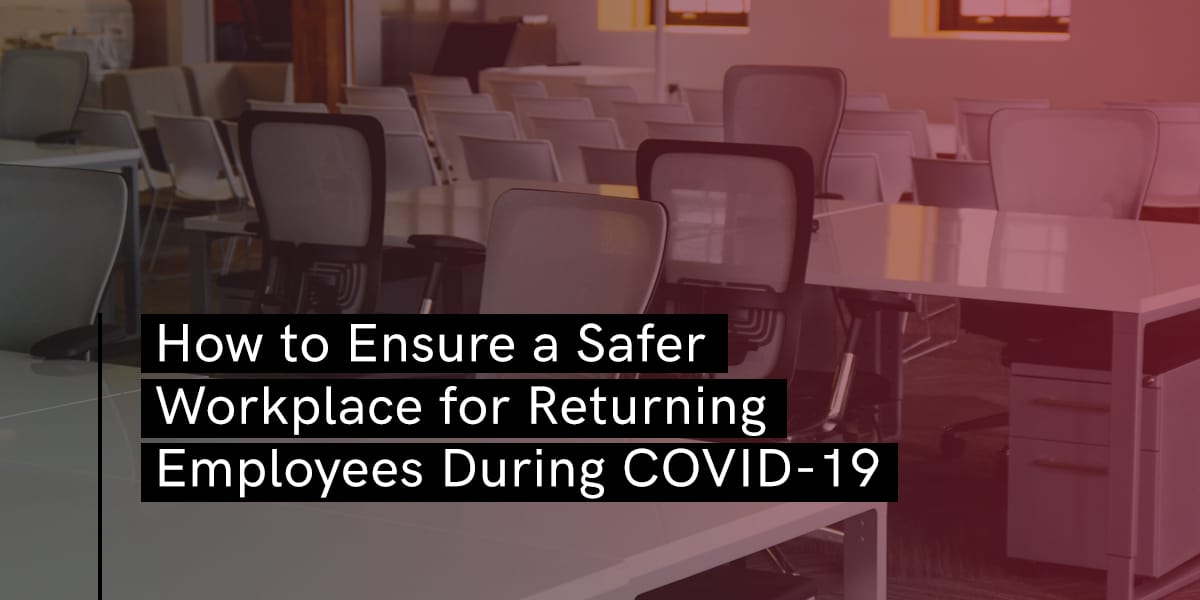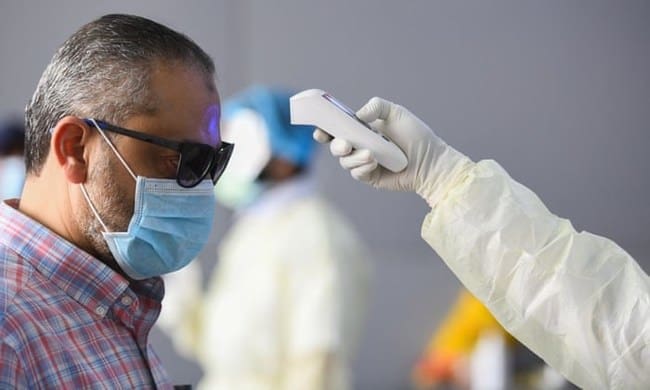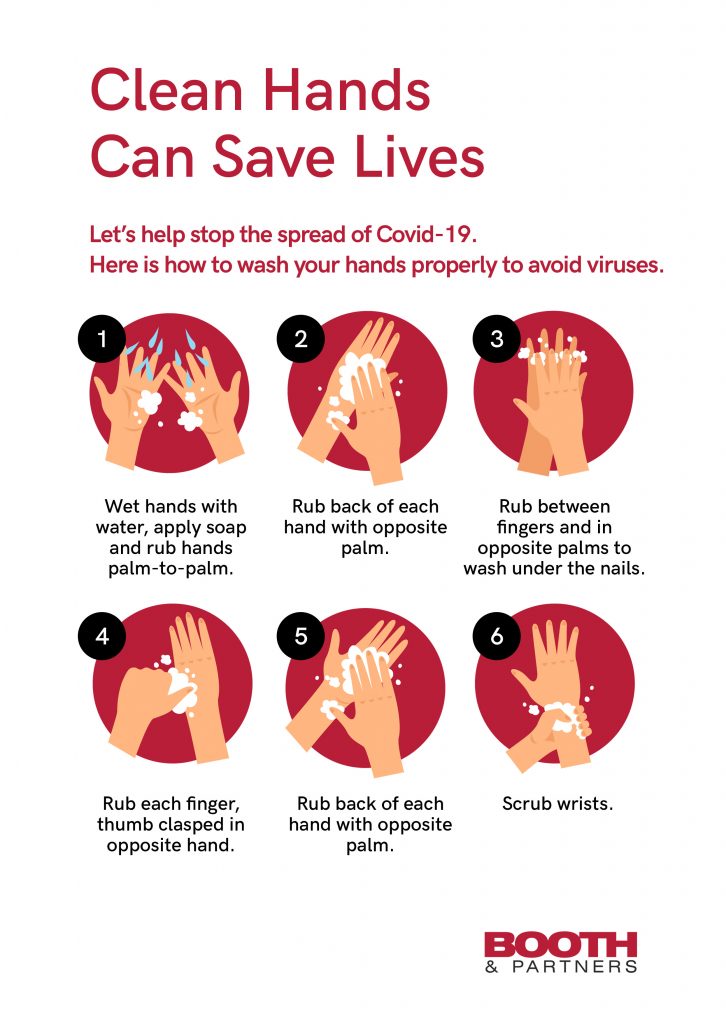How to Ensure a Safer Workplace for Employees During COVID-19

As cities around the world begin to lift lockdown restrictions, it has become essential for businesses to implement safety precautions and new strategies before allowing their employees to return to the office. According to health authorities, evidence suggests that the coronavirus may remain viable for hours to days on surfaces, which underlines the need for organizations to enforce sanitary regulations and consider hands-free technology as part of their workplace reopening strategies.
For business owners, the biggest challenge is to mitigate the risk using practices and policies that put the health and well-being of their employees first. Workplace safety extends not only to disinfecting and sanitizing the office, but to good communication and healthy office culture as well.
This safety checklist can help prevent the spread of the virus, reduce its impact on your employees, and help your business become fully informed about the latest health guidelines and recommendations on reopening your offices during the COVID-19 crisis.
Clean and Disinfect Workstations
First and foremost, it is important to know the difference between cleaning and disinfecting, as explained by the Centers for Disease Control and Prevention:
Cleaning removes germs, dirt, and impurities from surfaces or objects. Cleaning works by using soap (or detergent) and water to physically remove germs from surfaces. This process does not necessarily kill germs, but by removing them, it lowers their numbers and the risk of spreading infection.
Disinfecting kills germs on surfaces or objects. Disinfecting works by using chemicals to kill germs on surfaces or objects. This process does not necessarily clean dirty surfaces or remove germs, but by killing germs on a surface after cleaning, it can further lower the risk of spreading infection.
Implement daily sanitization of objects and surfaces that are touched often. These include desks, laptops, keyboards, doorknobs, door handles, faucets, light switches, and even smartphones. Keeping surfaces clean is critically important in minimizing the risk of spreading the virus. In addition to regular cleaning using soap, water, and cloth, you can also use bleach and hydrogen peroxide but remember to follow all necessary dilution and protection practices according to the label.

Source: Clinistic
Increase Security Measures
The best way to reduce risk in your office is to remove threats to security and safety, which includes decreasing the number of common touchpoints throughout the workplace premises. Research has shown that the virus does not spread as easily in the outdoors or areas with good ventilation. Installing high-efficiency air filters and better heating, ventilation, and air-conditioning systems prior to the reopening of your office is crucial to lessen the viral load in its interiors.
Furthermore, screening your employees with the presence of official COVID-19 testing personnel before they come in is highly recommended to avoid potential carriers of the virus. Remember: no testing shall take place where personal protective equipment is not available. The screening shall be conducted at the office entrance using thermal scanners requiring no skin contact. If an employee’s temperature is equal to or in excess of 37.4 degrees Celsius, he or she will not be allowed to enter the premises to commence work.
See guidelines below for COVID-19 testing personnel:
- Stand behind a glass or plastic partition to protect yourself from respiratory droplets that may be produced when employees cough, sneeze or talk.
- If a physical barrier is unavailable, put on a face shield, a pair of disposable gloves, and a gown if you expect to have extensive contact with the employee.
- Look for signs of illness, which could include flushed cheeks or fatigue.
- Check if there is coughing or shortness of breath.
- Check the temperature by reaching through an opening in the partition. Keep your face behind the barrier at all times.
- Reusable thermometers must be cleaned between each check.
- After screening the last employee, remove and discard PPE and gloves, and then clean your hands with soap and water for 20 seconds or with hand sanitizer containing at least 60% alcohol.
Always remind your employees to wear a face mask at all times when in the office premises, except only when drinking or eating. Doing so should protect themselves and others when it is difficult to maintain a 6-foot distance.
Handle Waste Properly
Implementing proper waste management measures to ensure the health and safety of your employees is essential for increasing their confidence in coming back to work. Employers should assess the hazards to which their employees may be exposed, and then take the necessary steps to avoid the risk of exposure.
- Provide your employees with tissues and trash bins lined with a plastic bag so that they can be emptied without touching the waste.
- Provide them with all necessary PPE if you identify a risk of infection. Have a healthcare expert train them in the correct use of PPE and ensure that they follow the guidance available.
- Throw disposable items used to clean surfaces and items in the trash immediately after use.
- Avoid touching used tissues and other waste when emptying trash bins.
- Wash your hands with soap and water afterwards.

Maintain Physical Distancing
Physical distancing means maintaining distance of at least six (6) feet or two (2) meters from others when possible. While some offices may have the luxury of space where employees can modify workstations to maintain physical distance, putting more distance between them will prove to be crucial in keeping the transmission of COVID-19 under control. There may be several moving and rewiring to be done, but the effort will be worthwhile.
Consider the following distancing strategies:
- Increase physical space between employees by adding an extra gap to ensure six (6) feet of distance.
- Create one-way traffic flow through aisles and hallways.
- Offer flexible work arrangements. This will result in fewer people in the office and reduced in-person meetings. Before you dive into a remote work set-up, ensure that your team’s laptops and IT infrastructure are configured with the best technology for remote collaboration.
- Stagger work schedules to lessen the number of employees in a space at one time. You can have a number of your team members work remotely for a week, then have them come into the office the next week. Make sure that thorough sanitization is done between shifts.
Always Communicate with your Employees
Good communication is one of the first and best tools at your disposal while navigating through the COVID-19 crisis. Be prepared to reassure and support employees who may be going through some personal challenges as a result of the pandemic and containment efforts.
Below are some of the best practices to consider in terms of communicating with your team members amid the crisis:
- Provide straightforward and concise updates relevant to your industry, business, culture, and workplace.
- Assemble a Communications team dedicated to answering questions and disseminating key information across all departments.
- Create a communication channel where your employees can reach out for concerns and needs that may arise.
- Display signage throughout the entire office premises that will keep everyone mindful of safety: proper hygiene, wearing of face mask, cleaning recommendations, physical distancing, room etiquette, and symptom checks.
- Create another internal communication channel solely for posting relevant company updates.
- Encourage virtual get-togethers such as team lunches or happy hours through video conferencing, especially for those who are still working remotely.
It is important to keep your communication lines open and check in regularly with your remote team as it is easy for collaboration to dwindle without face-to-face interaction. Moreover, tell your team how much you appreciate them and assure them of the continuity of your core mission and values.
The health and safety of your employees is the most important factor in your business. While it may seem daunting to adopt a shift in workplace policies after COVID-19, it is pivotal to approach the reopening of your office with an abundance of caution to enable business continuity with employee welfare in mind. Setting up a support system and creating a safe workplace for your employees can help them adjust to new realities and emotional challenges brought about by the pandemic. These guidelines will help you through the key steps of reopening your office and ensuring both your facilities and employees are prepared for a post-COVID-19 work environment.
Discover more about outsourcing and
how you can maximize it for your
business success!
Get a copy of our E-book: Guide to Outsourcing.




